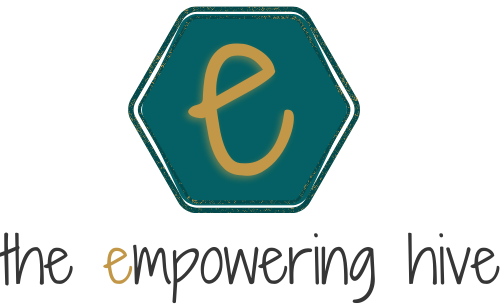The science behind holistic therapies
The science behind holistic therapies
When we hear the term holistic therapy, some imagine "woo-woo" acts and incense—others, emotional release without much structure. But there’s much more beneath the surface. Holistic therapies are grounded in the idea that your body, mind, and emotions are deeply interconnected. And among these tools, Bach Flower Remedies stand out as a powerful yet gentle way to support emotional healing.
In this article, we’ll explore how and why these therapies work, blending clinical experience, energetic theory, and emerging science. Whether you’re new to this world or already familiar with vibrational healing, this is your guide to understanding their real impact—especially if you're a professional or entrepreneur navigating high levels of stress, decision fatigue, or blocks around money and purpose.
What are holistic therapies?
Holistic therapies are based on an integrative view of the human being. They don’t separate the body from the mind or emotions—instead, they understand that everything is interconnected. That’s why when we work on a physical symptom, we also consider its emotional root, mental context, and energetic imbalance.
Unlike conventional approaches that focus on suppressing symptoms, holistic therapies aim to understand the deeper message behind the imbalance. What is your body trying to tell you? What part of you needs care or change? This approach invites you to take an active role in your well-being—not through pressure, but through awareness and listening.
For women in leadership or business, holistic work is especially powerful because it allows you to access clarity and alignment without disconnecting from your ambition. It helps you identify energetic and emotional blocks that may be impacting your ability to receive, charge your worth, or lead from a place of integrity.
Where do Bach Flowers come in?
Bach Flowers are a vibrational tool used within holistic therapy. They work gently on the emotional and energetic field, helping to dissolve mental and emotional patterns that keep us stuck. They don’t replace medical treatment but serve as a powerful companion in emotional healing, personal transitions, or simply to support greater inner harmony.
There are 38 flower essences discovered by Dr. Edward Bach in the 1930s, each one linked to a specific emotional state: fear, uncertainty, impatience, exhaustion, deep sadness, guilt, among others. The goal isn’t to suppress the emotion, but to help restore balance at the root.
Many women I work with are dealing not just with personal stress, but also with pressure around success, financial stability, and visibility in their work. Bach Flowers are especially helpful here—addressing deeper fears of failure or self-worth issues that may be silently affecting your income, confidence, and clarity.
Scientific studies exploring Bach Flower Remedies include:
While results are mixed and further research is needed, these peer-reviewed studies indicate potential benefits in areas like anxiety and stress—particularly when remedies are part of a broader holistic context.
How does it actually work? A deeper look into energy and science
Since the essences don’t contain measurable chemical compounds, many assume their effects must be psychological. However, clinical experience and modern science are opening new ways to understand what’s really happening.
According to Energy Medicine and Quantum Theory, all matter—including human cells and emotions—is made up of energy and vibrational fields. Each flower essence carries a specific energetic imprint—its frequency—transferred to water during the preparation process. This frequency interacts with the bioenergetic field of the person, supporting coherence where there is emotional dissonance.
Quantum Physics introduces concepts such as nonlocality (everything is interconnected), entanglement (change in one part affects another), and field theory (information and energy are stored beyond the physical). These ideas offer a framework to understand how vibrational medicine might influence the body without direct chemical interaction.
Water Memory, which composes over 70% of the human body, is thought to respond to vibrational inputs. Though still controversial, research into structured water and informational memory in liquids supports the idea that water may serve as a carrier for energetic data.
From a Neuroscience perspective, emotional states impact the autonomic nervous system and brain activity. Chronic stress or fear can create imbalances in the brain and body. Bach Flowers appear to support a return to homeostasis, helping the body self-regulate not through suppression, but through resonance.
Even though conventional medicine doesn’t fully recognise these mechanisms yet, fields like epigenetics, psychoneuroimmunology, and heart-brain coherence research continue to bridge the gap between energy and biology.
And then there’s the clinical reality: I’ve seen tangible changes in people who didn’t know what flower they were taking—in sceptics, children, and even animals. These aren’t cases of mental suggestion; they point to the resonance effect of energy interacting with energy.
Energy-based therapies
What about other energy-based therapies?
Beyond Bach Flowers, I often integrate or refer to other vibrational and energetic modalities—many of which are gaining traction even in conventional spaces.
Reiki, for example, is a Japanese technique based on the transfer of “universal life energy” through the hands. While the existence of "ki" (life force) hasn’t been scientifically proven, numerous studies have documented Reiki’s positive effects on pain, anxiety, and stress reduction. Measurable changes in heart rate variability and nervous system balance suggest that the technique activates the parasympathetic response—the body’s natural state of rest and healing.
Sound therapy, especially using Solfeggio frequencies (like 528 Hz), shows promising results in calming brainwave activity and supporting emotional regulation. Listening to specific frequencies has been associated with lower cortisol levels and improved brainwave patterns.
A Review on the Effects of Chanting and Solfeggio Frequencies on Well-Being (2023)
Effect of 528 Hz Music on the Endocrine System and Autonomic Nervous System (2018)
Aromatherapy acts as a bridge between subtle energy and biochemistry. Essential oils like lavender and rosemary have been shown to impact the limbic system—our emotional brain—with proven benefits such as reduced anxiety and improved cognitive function.
Lee J. et al., Effects of Aromatherapy on the Brain Health, Current Opinion in Psychiatry, 2023.
Setzer WN., Essential Oils and the Nervous System, Natural Product Communications, 2017.
These tools—along with others like color therapy and crystal healing—may not all be validated by conventional models yet, but they continue to demonstrate their value when observed through both energy-based logic and lived experience.
My experience with Bach Flowers
I’ve been using Bach Flowers with clients for years, and the results still amaze me. People come to me with anxiety, stress, exhaustion, or emotional blockages, and often feel relief after the first session. Others notice deeper changes over time: patterns start to shift, decisions come more easily, relationships evolve, and clarity replaces confusion.
One of the most memorable cases involved a client who felt deeply dissatisfied in her career but couldn’t identify why. I selected a flower aimed at helping set healthy boundaries—without telling her what it was for. Two weeks later, she returned surprised, sharing that she had begun setting boundaries naturally and effortlessly, without even realising it.
Another client came to work on celiac disease. While we didn’t replace her medical treatment, we noticed a strong emotional component tied to intolerance. I gave her a flower that supports emotional and physical tolerance—again, without explaining its specific purpose. Soon after, she reported noticeable improvement in her digestive symptoms.
Bach Flowers also work beautifully on animals, who have no mental filters or beliefs about what they’re taking. The changes are often rapid and obvious. That’s why I also offer flower remedy sessions for pets experiencing behavioural issues, anxiety, or transitions.
The role of the Bach Flower therapist
Many people search for ready-made blends or try to match a flower to their symptoms—and while that can offer basic support, it doesn’t replace a custom formula aligned with your emotional landscape. The real work lies in tuning into the root of the imbalance.
In a session, I don’t just listen to your story. I observe your energy, body language, tone, and cycles. From there, we co-create a blend that matches what your system is really asking for—not just what’s visible on the surface.
Even when I make formulas for myself, I often ask a trusted colleague to reflect back what I might not be seeing. It’s not always easy to access our blind spots—which is why a trained, neutral, intuitive perspective can be incredibly powerful.
Part of a broader path
Bach Flowers are also just one of the tools I use in a broader therapeutic process. Depending on the person, we might also work with emotional biodecoding, coaching, subconscious reprogramming, mindfulness, or nervous system regulation techniques.
For women in business or leadership, this is about more than stress management. It’s about clearing the emotional and energetic blocks that prevent visibility, abundance, aligned action, or self-trust. Your business is an extension of your energy—and when your internal system is out of alignment, your results often reflect that.
True healing doesn’t happen by managing symptoms. It happens when you shift your frequency, align with your inner truth, and allow your system to regulate itself with support.
Who can benefit from this work?
This kind of approach is ideal if you are experiencing:
Stress, insomnia, or unexplained physical symptoms
Emotional turbulence during life transitions
Difficulty making decisions or moving forward
Repetitive patterns in behaviour or relationships
A disconnect from your purpose or intuition
Fatigue, grief, anxiety, or emotional numbness
Business stagnation, creative blocks, or money-related stress
Behavioural imbalances or emotional distress in pets
Or if you simply want to reconnect with yourself in a deeper, aligned way
How to begin this journey
You can begin by reading, reflecting, and trying out essences. But if you want deep, personalised transformation, I suggest working with someone who can tune in to your energy and tailor the process to you.
At The Empowering Hive, you can book a 1:1 Bach Flower session or join the monthly subscription, which includes a personalised formula, educational resources, and exclusive discounts. I also support international clients by guiding them to find or mix the right remedies locally.
Conclusion: a gentle medicine that transforms from the root
Bach Flowers aren’t a trend or a magical fix. They are a subtle, respectful, and deeply transformative way to reconnect with yourself, restore your energy, and step out of autopilot. They don’t suppress, force, or numb—they listen, clear, and open new pathways. And when that happens, transformation isn’t just possible. It’s inevitable.



